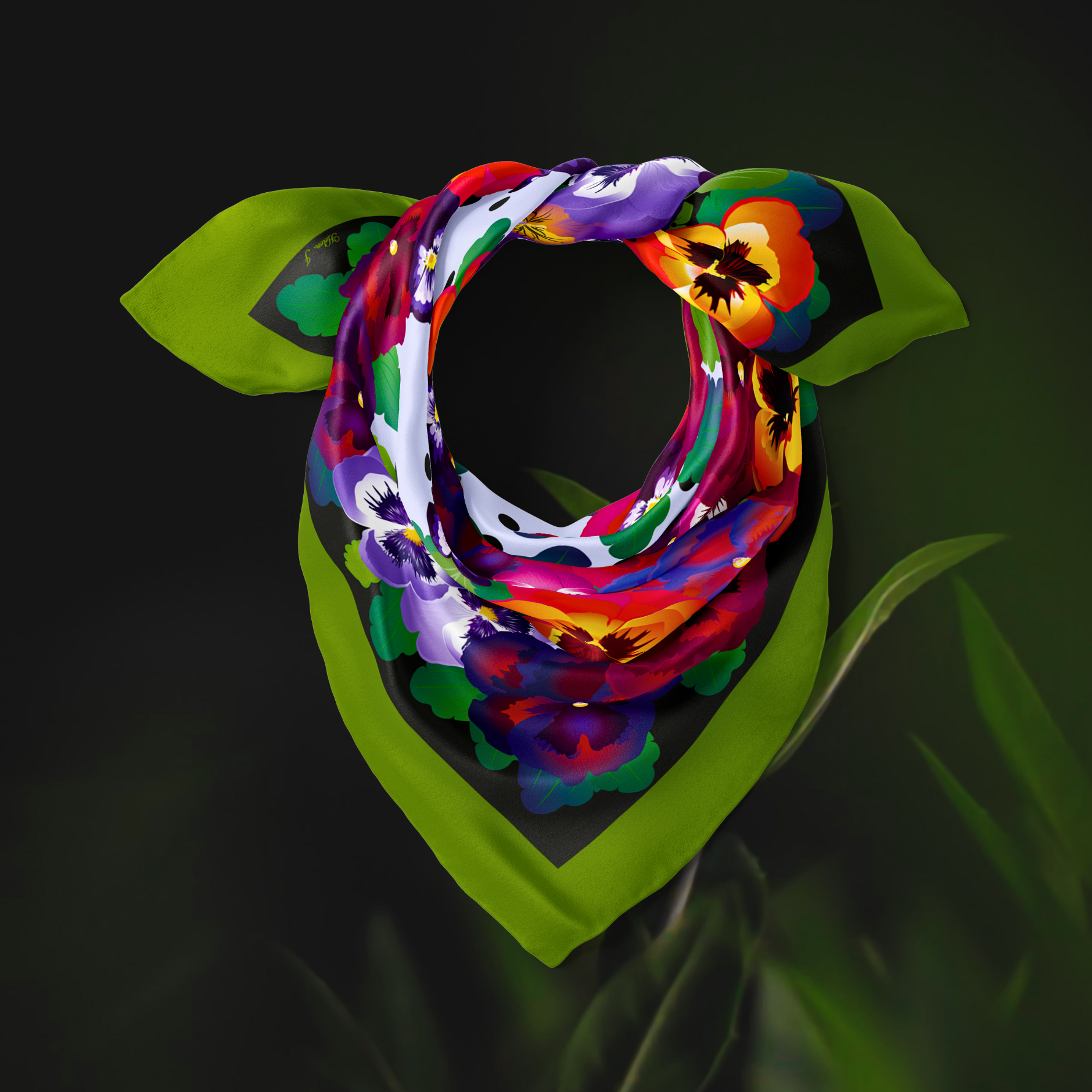Silktopia of Buxton: Reawakening Georgian Floral Design from 1744
Georgian Design Revival from Buxton: Inspired by Anna Maria Garthwaite’s 1744 Silks
A Legacy Woven in Silk
The Georgian period (1714–1830) marked one of Britain’s most refined eras of textile artistry. Among the visionary designers of this time, Anna Maria Garthwaite stands out as a true pioneer — her designs for silk brocades and damasks embodying both artistic imagination and technical mastery.
Working in Spitalfields, London, she bridged art and industry with remarkable precision. Her floral compositions — intricate yet naturally flowing — were hand-painted in watercolour and then translated into woven masterpieces by skilled silk weavers. The 1744 designs, from which our current inspiration is drawn, are among the most sophisticated examples of her mature style: floral arrangements alive with movement, symmetry, and grace.
Designs of Helen Johnson - ideas

The Golden Age of English Silk
In 18th-century England, Spitalfields became the epicentre of silk weaving. The district thrived thanks to the expertise of Huguenot craftsmen, many of whom had fled France after the Revocation of the Edict of Nantes in 1685. Their knowledge transformed London into a centre of excellence that rivalled Lyon and other European weaving hubs.
Weavers used draw-looms, highly intricate hand-operated machines capable of producing rich, multicoloured floral silks. Threads of gold, silver, and coloured silk were interlaced to create “flowered” textiles of remarkable depth and luminosity. These fabrics adorned fashionable gowns, waistcoats, and interiors, symbolising both artistry and status.
Designers like Garthwaite worked closely with the weavers, producing point-paper drafts where each tiny square represented an intersection of warp and weft. Her designs were distinctive for their botanical accuracy, echoing the growing scientific curiosity and love of nature characteristic of the Georgian mindset.
Designs of Helen Johnson - ideas

From Rococo to Naturalism
By the 1740s, English silk design was evolving. Earlier decades favoured the ornate asymmetry and fanciful compositions of “bizarre silks”, but the mid-18th century introduced a gentler, more naturalistic vision.
Garthwaite’s later designs reflected this shift beautifully — moving from stylised motifs toward lifelike representations of flowers such as carnations, tulips, chrysanthemums, and campanulas. Her colour palette softened, embracing creams, fawns, and delicate browns, often highlighted with pale blues or silver thread for contrast.
These works paralleled the emerging aesthetic theories of the time, notably William Hogarth’s “Line of Beauty” (1753), which celebrated fluid, serpentine forms as the foundation of elegance. Garthwaite’s trailing vines and curved stems visually embodied this philosophy, weaving art and nature into perfect harmony.
Designs of Helen Johnson - ideas - Research and Development

The 1744 Designs: Balance, Flow, and Harmony
Our inspiration is drawn directly from Garthwaite’s 1744 silk patterns, preserved in the Victoria and Albert Museum. These designs capture the balance between structure and spontaneity — formal symmetry softened by the organic grace of each bloom.
They exemplify what Linda Parry described as the “flowered silks” of the Georgian period — textiles that balanced technical mastery with aesthetic delicacy. Each motif was built to flow naturally across the fabric’s surface, suggesting continuous growth rather than rigid repetition.
This is precisely the essence we’re translating into our Silktopia Georgian Collection: left- and right-trailing floral vines, rendered in soft Georgian creams and browns, designed to move rhythmically across silk twill. They retain the same grace and balance as Garthwaite’s originals while allowing for fresh interpretation.
A Modern Reawakening
In reimagining these Georgian masterpieces, we’re not replicating the past — we’re reviving its principles: craftsmanship, harmony, and the art of the hand-drawn line.
Each motif in our collection is designed to echo the qualities that made Garthwaite’s work timeless:
-
Natural flow and proportion, drawn from real flowers.
-
Elegant colour restraint, reflecting Georgian taste.
-
Organic composition, made to breathe across fabric.
By weaving history into design, we honour not only Garthwaite’s legacy but also the enduring creativity of British textile artistry.
Damask from Anna Maria Garthwaite 1744.

From Spitalfields to Silktopia
Our upcoming Silktopia Georgian Designs continues this dialogue between past and present. Each silk twill scarf is created with the same devotion to detail that defined the 18th-century Spitalfields weavers — drawn, refined, and produced in Cheshire, the historic heart of English silk.
Through these designs, we celebrate Anna Maria Garthwaite’s 1744 vision — a world where craftsmanship met art, and every bloom was a story woven in silk. Today, that spirit lives again in Silktopia’s work: timeless, elegant, and proudly inspired by Britain’s Georgian silk heritage.
“Drawing on research from the Victoria and Albert Museum’s textile archives and Linda Parry’s work on Georgian silk design…”
Final Design by Helen Johnson

Our upcoming Silktopia Georgian Collection begins with its first design — a single piece inspired by the elegance of Anna Maria Garthwaite’s 1744 silk drawings. Created with the same devotion to detail that defined the 18th-century Spitalfields weavers, this inaugural design will be produced in Cheshire, the historic heart of English silk.
Through this piece, we celebrate the craftsmanship and beauty of Georgian Britain — where art and textile met in perfect harmony. This marks the beginning of Silktopia’s Georgian journey, with the full collection to follow in 2026.
This design collection is inspired by 18th-century Georgian textile artistry and the works of Anna Maria Garthwaite, reinterpreted through Silktopia’s original hand-drawn digital designs.
All new artwork and motifs are © Silktopia Ltd.


